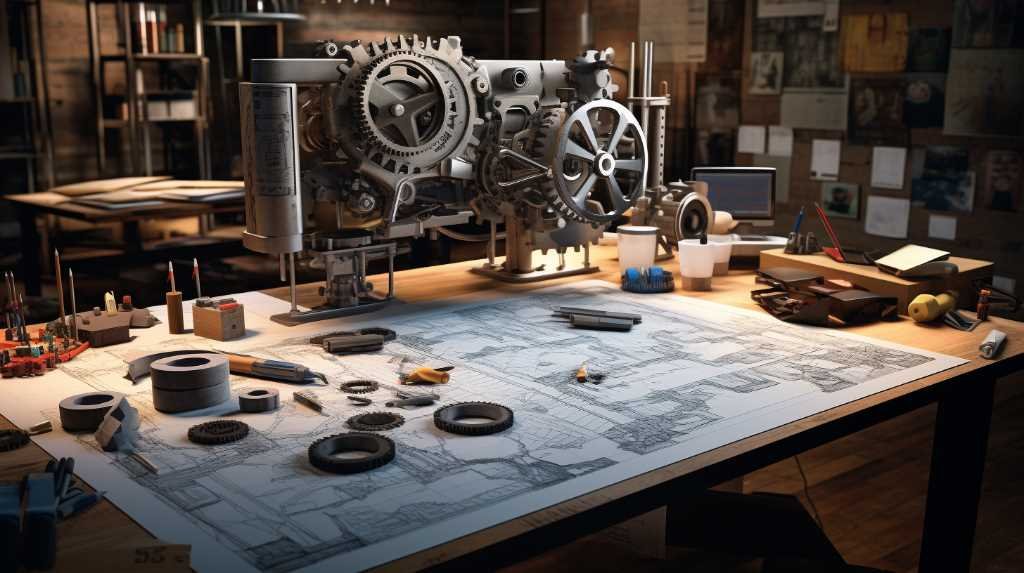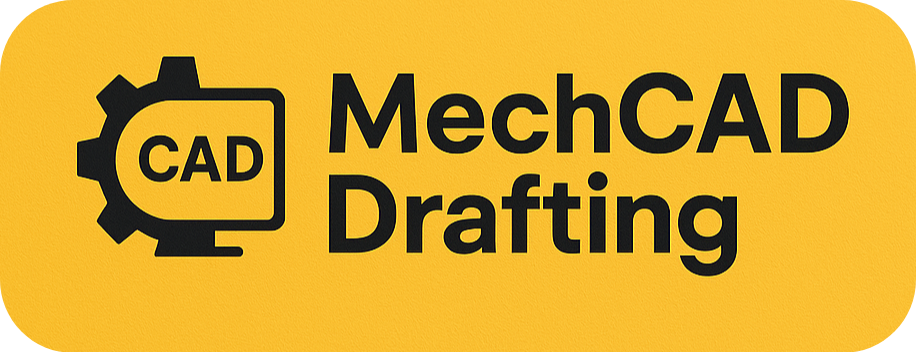Innovative Mechanical Design Solutions for Modern Engineering Needs

In today’s rapidly evolving world, engineering challenges are becoming more complex than ever. From smart factories to advanced medical devices and space exploration, the demand for innovative mechanical design solutions for modern engineering needs is growing at a fast pace. These solutions play a vital role in turning complex ideas into tangible products that function efficiently, reliably, and safely.
In this blog, we’ll explore the importance of innovation in mechanical design, the latest trends, tools, and technologies driving this field forward, and how modern engineering projects benefit from cutting-edge solutions.
What Are Mechanical Design Solutions?
Mechanical design is the process of applying engineering principles to create physical systems and products. It includes analyzing problems, generating concepts, building models, and testing prototypes. The aim is to optimize performance while considering factors like cost, safety, durability, and manufacturability.
Mechanical design solutions involve the application of design strategies, simulations, and tools that help engineers build effective components and systems. But with technology advancing rapidly, engineers now face the challenge of adapting to newer methods and meeting higher standards — which is where innovative mechanical design solutions for modern engineering needs come into play.
Why Innovation Is Crucial in Mechanical Design
Traditional mechanical design methods no longer meet the demands of modern-day engineering. With stricter regulations, faster timelines, and the need for sustainable practices, innovation is no longer optional — it’s essential.
Here’s why:
1. Increased Efficiency
Innovative designs improve energy usage, reduce material waste, and minimize downtime in production systems. For example, lightweight materials and streamlined geometries in automotive design reduce fuel consumption and increase vehicle lifespan.
2. Enhanced Functionality
Smart sensors, AI-driven simulations, and 3D modeling allow engineers to create more functional and adaptive products. This ensures modern products can meet the expectations of both consumers and industries.
3. Sustainability Goals
As industries focus more on green technologies, innovative mechanical design solutions for modern engineering needs support eco-friendly manufacturing, recycling systems, and sustainable energy practices.
Key Trends in Innovative Mechanical Design
Let’s dive into the major trends reshaping the future of mechanical design:
1. Additive Manufacturing (3D Printing)
Additive manufacturing enables rapid prototyping and the production of complex parts with less material waste. Engineers can now design intricate components previously impossible to produce through traditional methods.
2. Digital Twin Technology
A digital twin is a virtual replica of a physical object. By simulating performance in real-time, engineers can test and refine designs before production, saving time and costs.
3. AI and Machine Learning Integration
AI helps in predictive maintenance, optimizing designs, and even automating some stages of product development. These tools are a key part of innovative mechanical design solutions for modern engineering needs.
4. Internet of Things (IoT)
IoT connects mechanical systems to the internet for better data collection and performance monitoring. Smart HVAC systems and connected medical devices are excellent examples.
5. Lightweight & Composite Materials
Materials like carbon fiber and titanium alloys are widely used to reduce weight without compromising strength. These materials are crucial in aerospace, automotive, and sports equipment design.
Core Elements of Innovative Mechanical Design
To meet the unique demands of today’s projects, a design must integrate multiple innovative features:
1. Optimization
Modern tools like finite element analysis (FEA) and computational fluid dynamics (CFD) allow engineers to test different configurations quickly. This ensures the best possible design before going to production.
2. User-Centered Design
Focusing on the end-user leads to more intuitive, ergonomic, and accessible products. This approach is essential in industries like healthcare and consumer electronics.
3. Modularity and Scalability
Designs must be scalable and easy to upgrade. A modular approach allows companies to reuse components across multiple products, saving time and cost.
4. Cost Efficiency
While innovation often comes with a price, intelligent design reduces long-term costs through material savings, ease of manufacturing, and fewer product failures.
Industries That Rely on Innovative Mechanical Design Solutions
Let’s explore how innovative mechanical design solutions for modern engineering needs impact various industries:
1. Aerospace
With strict safety standards and the need for lightweight, high-performance parts, aerospace engineering thrives on innovation. Mechanical design focuses on fuel efficiency, noise reduction, and advanced materials.
2. Automotive
Electric vehicles, autonomous driving, and emission standards have redefined automotive design. Engineers use simulations, IoT, and hybrid materials to meet new demands.
3. Medical Devices
Precision, safety, and customization are key. 3D-printed prosthetics, robotic surgical tools, and portable diagnostic devices are possible thanks to mechanical design innovations.
4. Manufacturing
Smart factories use robotics, automation, and digital modeling. Machines are designed for self-monitoring, energy savings, and quick adaptability to product changes.
5. Renewable Energy
Wind turbines, solar trackers, and hydro systems all require mechanical components that are durable and efficient. Innovation supports both performance and sustainability.
Tools That Power Modern Mechanical Design
To create innovative mechanical design solutions for modern engineering needs, engineers rely on powerful tools and software:
- SolidWorks – For 3D CAD modeling
- AutoCAD – For 2D drafting and mechanical detailing
- ANSYS & COMSOL – For simulations and analysis
- MATLAB – For mathematical modeling and control systems
- Fusion 360 – For cloud-based collaborative design
- PTC Creo & CATIA – Used for advanced product lifecycle management
These tools reduce errors, accelerate timelines, and support high levels of precision.
Case Study: Real-World Mechanical Design Innovation
Project: Electric Bike Redesign
Challenge: A startup wanted to redesign their e-bike for better battery life, improved performance, and reduced manufacturing costs.
Solution:
- Used lightweight aluminum frame
- Integrated battery within the frame using modular design
- Added regenerative braking system
- Employed AI software to simulate terrain response
Outcome:
- 20% longer battery life
- 30% cost reduction in manufacturing
- Enhanced user experience through smart features
This is a prime example of how innovative mechanical design solutions for modern engineering needs deliver practical benefits.
Benefits of Adopting Innovative Design
Businesses and engineers that embrace innovative design methods enjoy numerous benefits:
- Faster time to market
- Improved product quality
- Higher customer satisfaction
- Reduced production costs
- Sustainability compliance
- Stronger competitive edge
These advantages are essential in today’s highly competitive global market.
Challenges in Implementing Innovative Design
While the benefits are many, implementing innovative mechanical design solutions for modern engineering needs isn’t without challenges:
- High initial investment in tools and training
- Resistance to change within traditional teams
- Complexity in integrating digital systems
- Cybersecurity risks with connected designs
These issues can be overcome with proper planning, training, and support.
The Future of Mechanical Design
The future holds exciting possibilities:
- Generative design: AI will suggest multiple design options based on input parameters.
- Sustainable design: Recyclable materials and energy-efficient systems will become standard.
- Remote collaboration: Teams across the globe will co-design using cloud-based tools.
- Bio-inspired design: Nature will inspire innovative solutions for real-world problems.
The continued push for innovative mechanical design solutions for modern engineering needs will shape everything from everyday products to space technology.
How to Get Started
If you’re an engineer, startup founder, or company leader looking to embrace innovation in mechanical design, here’s how to begin:
- Invest in the right tools and training
- Encourage a culture of creativity and experimentation
- Partner with design experts or agencies
- Use prototyping and testing to refine ideas
- Stay updated on new materials and technologies
Conclusion
In an era where efficiency, precision, and sustainability are non-negotiable, innovative mechanical design solutions for modern engineering needs are the foundation of progress. Whether you’re in aerospace, healthcare, or renewable energy, mechanical design is the silent force that transforms ideas into reality.
